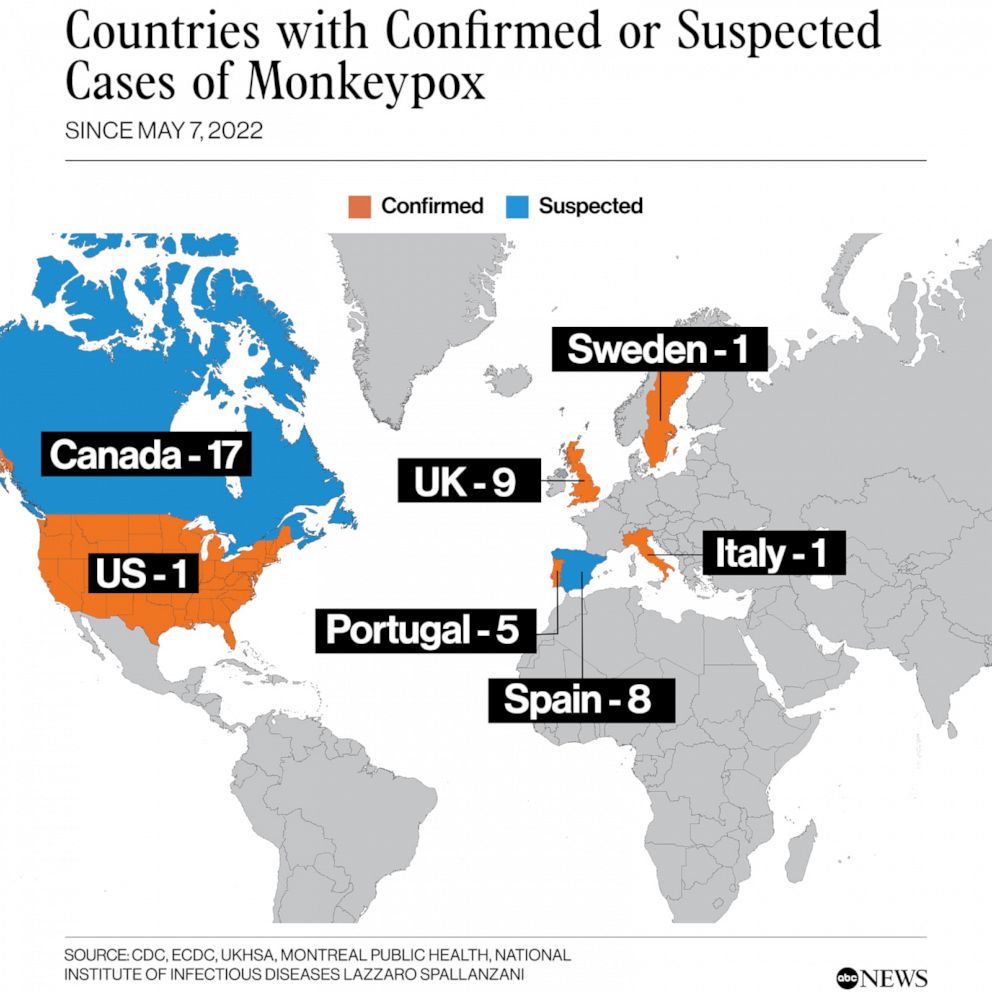
Dear Commons Community,
As if the resurgence of COVID wasn’t enough, seven countries are investigating possible cases of monkeypox, including the United States where a second possible case has been reported in New York City.
A day after a case was reported in Massachusetts, health officials in New York City reported a possible case of monkeypox.
Canada on Thursday reported 17 possible monkeypox cases. Several countries in Europe are reporting outbreaks as well: There are 22 suspected cases being investigated in Spain, 20 in Portugal, seven cases in the United Kingdom, one in Italy and one in Sweden.
No source of infection has yet been confirmed, according to the World Health Organization. As reported by USA Today.
Monkeypox is not a disease of monkeys but instead lives in small rodents mostly in central and west Africa. The rodents infect monkeys and both can pass it along to humans.
While most cases of the disease come from contact with wild animals, not human-to-human contact, health authorities are investigating how the new surge in cases is spreading.
Some of the cases appear to have spread between sexual partners and it appears all the reported cases are in men so far.
“Mainly those cases are men that have had sexual relationships with other men, ages between 35 and 50 years old,” Dr. Mylène Drouin, Montreal’s public health director, said during a news conference on Thursday. “The clinical presentation is mainly ulceration of oral and genital parts that are painful with a phase before the eruption with fever, sweating and headaches.”
Experts emphasized monkeypox, a much less dangerous relative of smallpox, is not a sexually transmitted disease.
“It can transmit through respiratory droplets or person-to-person contact,” said Anne Rimoin, a professor of epidemiology at the University of Los Angeles and a national expert on monkeypox.
Most of the patients appear to have ulcerative lesions, rash, swollen lymph nodes often accompanied by fever, chills, headache, muscle pain and tiredness. Anyone experiencing these symptoms should reach out to their health care provider.
Many possible cases turn out not to be monkeypox because the disease can be mistaken for other infections and skin rashes.
“In fact, it can be really difficult to differentiate from chickenpox. You get fevers, swollen lymph nodes and small little blisters of fluid throughout your body,” said Dr. Seth Blumberg, an infectious disease specialist at the University of California, San Francisco.
There is no need for alarm among the public because monkeypox is not highly contagious.
“This isn’t COVID again. This isn’t Wuhan China in 2019,” Blumberg said.
It’s unlikely that anyone who hasn’t been in very close, physical proximity to someone infected with monkeypox is in any danger, said Dr. Aaron Glatt, chief of infectious diseases at Mount Sinai South Nassau Hospital in Hewlett, NY.
“Your exposure if you’re sitting next to someone on the subway is very different than if you’re engaging in relations with them,” said Glatt, who is also a fellow with the Infectious Diseases Society of America.
Prior to this, all but one case of monkeypox outside of Africa was the result of either confirmed or suspected animal-to-human transmission, according to a paper published in February in the journal “PLOS: Neglected Tropical Diseases.”
The only human-to-human transmission case was between a health care worker in the United Kingdom who cared for a patient there.
Figuring out how or if the latest cases are linked will take careful public health investigation.
“It’s too soon to have any clarity. It is an unusual situation,” said Rimion, who has been studying the disease in Africa since the 1990s. “We don’t yet know who, what, where, why or when.”
Monkeypox is one of a family of more than nine viruses that includes smallpox, one of the most deadly diseases to ever infect humans, killing about one in three people who got it before it was eradicated in 1980, considered one of the greatest public health achievements of all time.
The death rate for monkeypox in areas with high-quality medical care is well below 1% of cases, said Glatt.
The last large outbreak in the United States was in 2003 when small mammals shipped from Ghana to Texas, including rope squirrels, tree squirrels, African giant pouched rats, brush-tailed porcupines, dormice, and striped mice, were all shown to be positive for monkeypox.
Some of the infected animals’ were then moved to the facilities of an animal vendor in Illinois, infecting prairie dogs held in nearby cages. The prairie dogs were then sold as pets, causing the outbreak.
Monkeypox outbreaks are thought to be increasing in part because once the smallpox virus was eradicated in 1980, large-scale vaccination against the scourge ceased. Vaccination against smallpox protects against monkeypox, said Rimoin.
“It makes sense as time goes on and the vast majority of the world has no immunity, and people come into contact with the monkeypox virus, that people will get infected,” she said.
Something to be aware of
Tony


